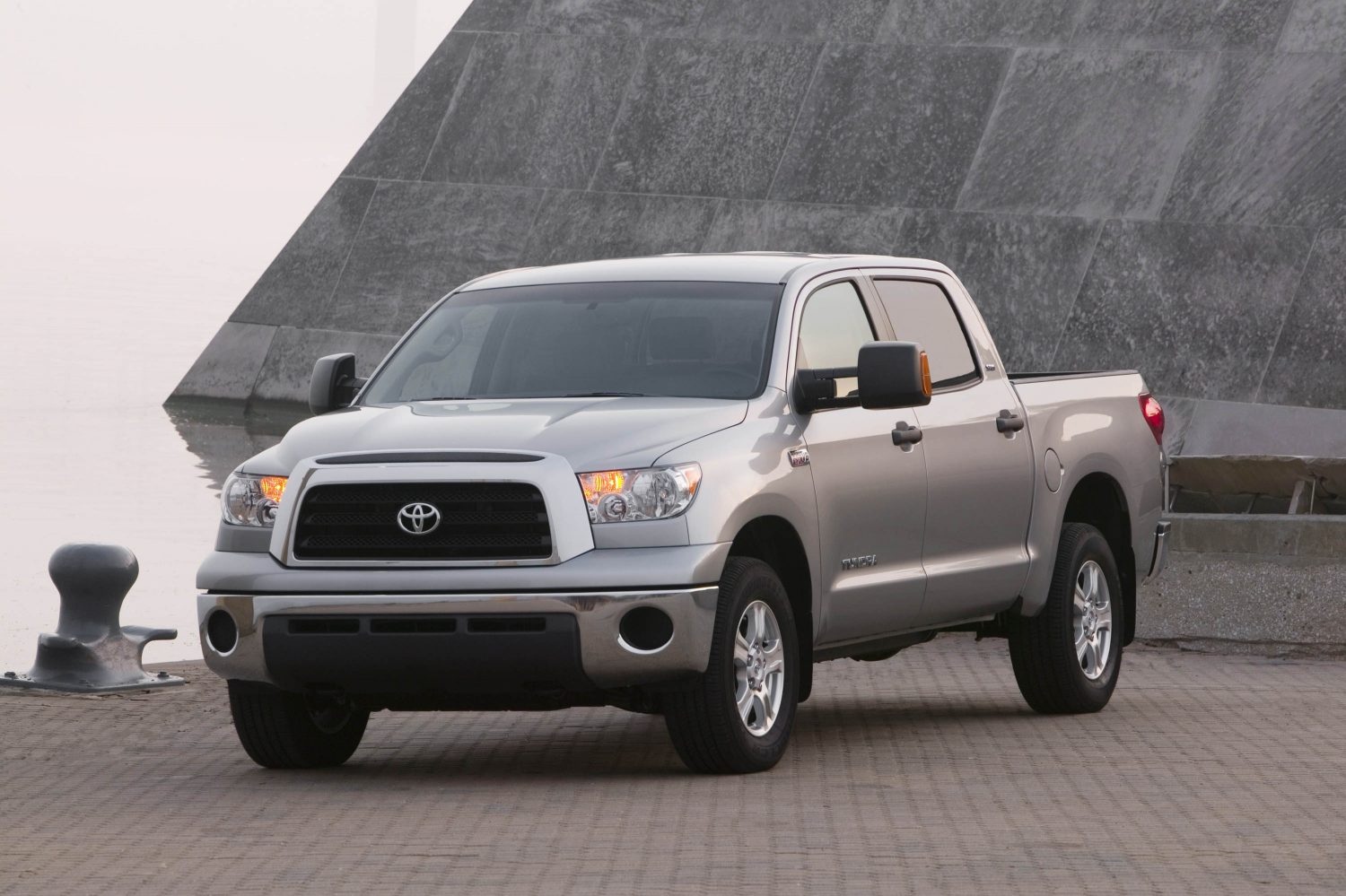Trucks For Sale With Bad Credit: Your Comprehensive Guide to Driving Away with Confidence pickup.truckstrend.com
For many individuals and businesses, a truck is more than just a vehicle; it’s a vital tool for work, a means for recreation, or an essential part of daily life. From hauling equipment to towing a boat, or simply navigating challenging terrains, trucks offer unparalleled utility. However, the dream of owning a reliable truck can often feel out of reach, especially when faced with the formidable hurdle of a low credit score. "Bad credit" can seem like a financial scarlet letter, making traditional lenders wary and loan approvals difficult.
But here’s the empowering truth: having bad credit does not automatically disqualify you from purchasing a truck. While it certainly presents unique challenges, the automotive market has evolved to offer various pathways for individuals with less-than-perfect credit histories. This comprehensive guide will demystify the process of buying a truck with bad credit, providing you with the knowledge, strategies, and practical advice needed to navigate the market successfully and drive away with the truck you need. We’ll explore everything from understanding your credit situation to finding the right lenders and making an informed purchase, ensuring you can turn the perceived disadvantage of bad credit into an opportunity to rebuild your financial standing.
Trucks For Sale With Bad Credit: Your Comprehensive Guide to Driving Away with Confidence
Understanding Bad Credit and Its Impact on Truck Loans
Before diving into solutions, it’s crucial to understand what "bad credit" entails and how it influences a lender’s decision. Your credit score, primarily FICO and VantageScore, is a numerical representation of your creditworthiness, ranging from 300 to 850. Generally, a score below 620 is considered "subprime" or "bad credit," indicating a higher risk to lenders.
When you apply for a truck loan with bad credit, lenders perceive a greater likelihood of default. This heightened risk translates into less favorable loan terms for you. You can expect:
- Higher Interest Rates (APR): This is the most significant impact. Lenders charge more interest to compensate for the risk, meaning you’ll pay significantly more over the life of the loan.
- Larger Down Payment Requirements: A substantial down payment reduces the loan amount, thereby lowering the lender’s risk and increasing your equity in the vehicle from day one.
- Shorter Loan Terms: While a shorter term means higher monthly payments, it also reduces the overall interest paid and the time frame during which the lender is exposed to risk.
- Fewer Loan Options: Traditional banks and credit unions may be hesitant, pushing you towards specialized lenders.
- Limited Vehicle Choices: Lenders might restrict financing to less expensive, older, or higher-mileage vehicles to mitigate their risk.

Despite these challenges, a significant segment of the automotive financing industry specializes in subprime loans. These lenders understand that life happens – whether it’s medical debt, job loss, or past financial missteps – and are willing to work with buyers to help them get back on track.
Pathways to Securing a Truck with Bad Credit
The journey to truck ownership with bad credit requires exploring non-traditional avenues and leveraging strategies to improve your appeal to lenders.

-
Subprime Lenders and Special Finance Dealerships: These are your primary allies. Subprime lenders specialize in providing loans to individuals with low credit scores. They often look beyond just your credit score, considering factors like stable income, employment history, and residency. Many dealerships have a "special finance" department dedicated to helping buyers with credit challenges connect with these lenders. While their rates are higher, they offer a viable path to approval.

Buy Here Pay Here (BHPH) Dealerships: These dealerships offer in-house financing, meaning they are both the seller and the lender. Approval rates are very high, as they focus heavily on your ability to make payments (proof of income) rather than your credit score.
- Pros: Easy approval, quick process, no credit check often.
- Cons: Very high interest rates (sometimes exceeding 25-30%), limited selection of older, higher-mileage vehicles, and sometimes don’t report payments to all credit bureaus, limiting credit-building potential. Use with caution and as a last resort.
-
Credit Unions: If you are a member of a credit union or can join one, they can sometimes be more flexible than traditional banks. Their non-profit nature often allows for more personalized consideration of your financial situation, potentially offering slightly better rates than subprime lenders, even with bad credit.
-
Secured Loans: Some lenders might offer a secured loan where you use a different asset (like savings) as collateral. This is less common for vehicle loans but can be an option for some.
-
Co-Signer: A co-signer with good credit can significantly improve your chances of approval and secure better terms. The co-signer essentially guarantees the loan, taking on legal responsibility for repayment if you default.
- Benefits: Lower interest rates, higher approval odds.
- Risks: If you miss payments, it negatively impacts your co-signer’s credit, and they become legally obligated to pay. This should only be considered with someone you trust implicitly and who understands the risks.
-
Larger Down Payment: This is arguably your most powerful tool. A substantial down payment reduces the amount you need to borrow, thereby lowering the lender’s risk and potentially earning you a lower interest rate. It also reduces your monthly payments and the total interest paid over the loan term.
-
Trade-in: If you have an existing vehicle with equity (its value is greater than what you owe on it), that equity can act as a down payment, reducing the amount to finance.
Preparing for Your Truck Purchase with Bad Credit
Thorough preparation is key to a successful and less stressful truck buying experience when you have bad credit.
-
Check Your Credit Score & Report: Obtain free copies of your credit report from AnnualCreditReport.com. Review them for errors and understand exactly where you stand. Dispute any inaccuracies, as this could boost your score. Knowing your score also helps you set realistic expectations for loan terms.
-
Determine Your Realistic Budget: Don’t just consider the monthly payment. Factor in:
- Down Payment: How much can you realistically save?
- Monthly Payment: What can you comfortably afford without straining your finances?
- Interest Rate: Understand how this inflates the total cost.
- Insurance: Trucks, especially newer models, can have higher insurance premiums. Get quotes before you buy.
- Fuel Costs: Trucks generally consume more fuel.
- Maintenance & Repairs: Older, high-mileage trucks might require more upkeep.
-
Save, Save, Save for a Down Payment: Aim for at least 10-20% of the truck’s price. The more you put down, the better your chances of approval and securing more favorable terms. It shows lenders your commitment.
-
Gather Necessary Documents: Be prepared with proof of income (pay stubs, bank statements), proof of residency (utility bills), identification (driver’s license), and references if required.
-
Research & Shop Around (Lenders & Dealerships): Don’t settle for the first offer. Apply for pre-approval with multiple lenders (subprime lenders, credit unions, online lenders) within a short window (14-45 days) to minimize impact on your credit score (it counts as a single inquiry for scoring purposes). Compare interest rates, loan terms, and total costs.
-
Prioritize Needs Over Wants: With bad credit, focus on a reliable, affordable truck that meets your essential needs. A used, base model pickup (e.g., an older Ford F-150, Chevrolet Silverado 1500, Ram 1500, or a mid-size like a Toyota Tacoma or Nissan Frontier) will be far more accessible than a brand-new, fully loaded heavy-duty truck. Consider 2WD instead of 4WD if you don’t absolutely need it, as it’s typically cheaper.
Navigating the Truck Buying Process
Once you’re prepared, the actual buying process involves careful steps.
-
Get Pre-Approved: This is crucial. Pre-approval tells you how much you can borrow, at what interest rate, and helps you shop with confidence. It also gives you leverage at the dealership, as you already have financing secured.
-
Visit Dealerships: Be upfront about your credit situation. Special finance managers are trained to work with bad credit. Negotiate the truck’s price first, then discuss financing. Don’t be pressured into add-ons you don’t need.
-
Understand All Loan Terms: Before signing, meticulously review the loan agreement. Pay close attention to:
- Annual Percentage Rate (APR): This is the true cost of borrowing, including interest and fees.
- Loan Term: How many months will you be paying? A longer term means lower monthly payments but significantly more interest paid overall.
- Total Cost of Loan: Calculate the total amount you’ll pay over the loan term (principal + interest).
- Prepayment Penalties: Can you pay off the loan early without penalty? This is important if you plan to refinance later.
-
Avoid Scams and Predatory Lenders: Be wary of promises that sound too good to be true. Avoid lenders who guarantee approval without any information, pressure you into signing, or demand upfront fees before loan approval. Reputable lenders will always require a credit check and proof of income.
-
The Importance of On-Time Payments: This is your golden ticket to rebuilding credit. Every on-time payment reported to credit bureaus will gradually improve your score, opening doors to better financial opportunities in the future, including potential refinancing at a lower rate.
Illustrative Cost Comparison: Trucks For Sale With Bad Credit
To highlight the impact of bad credit on the total cost of a truck, let’s look at a hypothetical scenario. This table provides illustrative examples and not actual prices, as rates and terms vary wildly based on market conditions, individual credit profiles, truck specifics, and lender policies.
Hypothetical 2018 Used Ford F-150 (XLT Trim, V6, 2WD) – Purchase Price: $20,000
| Scenario | Credit Score (Example) | Down Payment | Truck Price | APR (Example) | Loan Term (Months) | Estimated Monthly Payment | Estimated Total Paid (Principal + Interest) |
|---|---|---|---|---|---|---|---|
| Excellent Credit | 750+ | $2,000 | $20,000 | 4.9% | 60 | ~$377 | ~$22,620 |
| Good Credit | 680-749 | $2,000 | $20,000 | 7.9% | 60 | ~$404 | ~$24,240 |
| Bad Credit (Standard) | 500-619 | $2,000 | $20,000 | 18.9% | 60 | ~$508 | ~$30,480 |
| Bad Credit (Higher DP) | 500-619 | $5,000 | $20,000 | 16.9% | 60 | ~$368 | ~$22,080 (on $15k financed) |
| BHPH (Lower Priced Truck) | No Score/Low | $2,000 | $15,000 | 25.0% | 48 | ~$399 | ~$19,152 |
Note: These figures are illustrative and do not include taxes, fees, or insurance. APRs for bad credit can be higher or lower depending on various factors, including the lender’s specific policies and your individual financial stability.
As you can see, the impact of bad credit on the Annual Percentage Rate (APR) dramatically increases the total cost of the truck. A higher down payment, even with bad credit, can significantly reduce the overall amount paid in interest.
Frequently Asked Questions (FAQ) About Buying a Truck with Bad Credit
Q1: Can I really get a truck with bad credit?
A1: Yes, absolutely. While it’s more challenging than with good credit, there are many lenders and dealerships specializing in helping individuals with bad credit secure vehicle loans.
Q2: What interest rate can I expect with bad credit?
A2: Interest rates for bad credit truck loans typically range from 10% to 25% or even higher, depending on your specific credit score, down payment, income stability, and the lender. In contrast, excellent credit rates can be below 5%.
Q3: How much down payment do I need for a truck with bad credit?
A3: While some loans require no money down, it’s highly recommended to have at least 10-20% of the truck’s price as a down payment. A larger down payment significantly improves your chances of approval and can lead to better loan terms by reducing the lender’s risk.
Q4: Should I use a co-signer?
A4: A co-signer with good credit can greatly improve your loan terms. However, it places significant financial responsibility on them. Only consider this option with someone you trust completely, and ensure they understand the risks involved.
Q5: What’s the difference between a subprime lender and a "Buy Here Pay Here" (BHPH) dealership?
A5: Subprime lenders are third-party financial institutions that specialize in higher-risk loans and work with various dealerships. BHPH dealerships provide in-house financing directly, meaning they are both the seller and the lender. BHPH often has higher interest rates and less selection but offers easier approval, focusing more on income than credit history.
Q6: Will buying a truck with bad credit help my credit score?
A6: Yes, if managed responsibly. Making all your truck loan payments on time and in full is one of the most effective ways to rebuild your credit score. Payment history is the largest factor in credit scoring.
Q7: What if I get denied for a truck loan?
A7: Don’t get discouraged. Ask the lender why you were denied. It could be insufficient income, too high a debt-to-income ratio, or specific items on your credit report. Address these issues, save for a larger down payment, or consider a less expensive vehicle. You can also work on improving your credit before reapplying.
Conclusion
Purchasing a truck with bad credit is undoubtedly a journey that requires patience, diligent research, and careful planning. However, it is far from an impossible feat. By understanding the nuances of subprime lending, preparing your finances, and strategically navigating the market, you can find a reliable truck that fits your needs and budget.
Remember that this purchase isn’t just about acquiring a vehicle; it’s an opportunity to take control of your financial future. By making consistent, on-time payments, you will not only fulfill your dream of owning a truck but also steadily rebuild your credit score, paving the way for better financial opportunities down the road. Embrace the process, stay informed, and drive forward with confidence.


